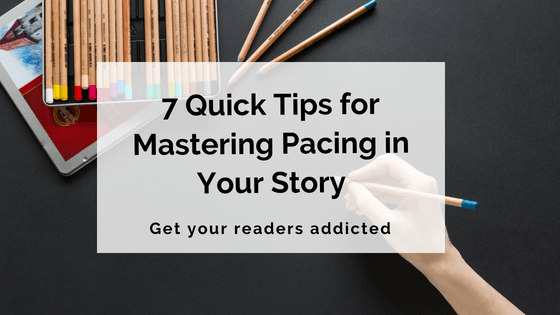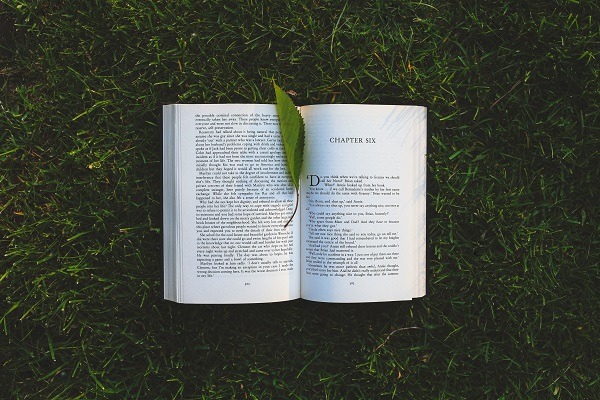Most writers will be aware that pacing is important, whether in a short story, a novel or across an entire series.
But what exactly is pacing? Why is it so important? And how can you make sure you master it in whichever kind of story you’re writing?

Pacing in fiction refers to the speed at which a story unfolds – its rhythm and flow, the rise and fall of its plot points and events. Basically, it’s how quickly or slowly you’re telling the story to readers.
Well-considered, controlled pacing is important, because without it, a story will feel uneven and disjointed. Parts that are too fast risk rushing readers through and losing impact, while parts that are too slow risk boring them.
It’s important to balance faster- and slower-paced sections in your work to create a story that flows seamlessly, develops plot and characters effectively, and engages readers consistently.
Let’s dive into some quick tips on how to achieve just that!
1. Break down the structure of your story
Whether you have an outline or plan for your story, or you’ve already completed your first draft, one way to work out how pacing should flow is to break the story down and examine the pieces closely.
Scrivener’s scene and chapter cards are a useful way to do this, but you can also hand-write or type out a basic breakdown yourself. All you need is the main events of the narrative mapped out in the order they occur.

Doing this will help you see where you need to increase the pace and ramp up tension, where you can afford to slow things down a little, and how the narrative rises and falls over the course of the entire story.
It will also allow you to see whether the pace is uneven or inconsistent in places, and identify where/how you can smooth it out.
If your story follows a common structure such as the three-act structure, breaking it down to its components will make it even easier to identify where high/low/fast/slow points usually happen in these types of stories.
2. Use sentence, paragraph and chapter length to influence pace
One of the easiest ways to control pacing in your story is through the length of your sentences, paragraphs and chapters.
In a fight scene, for example, you want to keep things fast-paced and exciting.
To achieve this, use short, choppy sentences and shorter paragraphs to keep readers’ eyes flying over the words. Perhaps end the chapter on a cliffhanger to keep them flipping pages, desperate to find out what happens next.

In a slower-paced section, on the other hand – perhaps one where you want to delve deeper into a character (more on this below) – longer sentences and paragraphs will be more effective.
You can also afford to be a little more lyrical rather than strictly economical with words in these sections, allowing the prose to slow the pacing a little by encouraging readers to linger over every word.
3. Use heightened detail when you want to slow things down
Another way to slow down the pacing – especially for a single moment that you want to highlight – is to heighten the attention to detail.
Think of a slow-motion movie shot. This kind of shot amps up the focus on each visual aspect, allowing the viewer to experience a single moment in exquisite detail.

You can utilise a similar technique and achieve a similar effect in your writing.
This sort of ultra-slowed-down moment is perhaps most effective when juxtaposed with an otherwise fast-paced scene, adding interest and drawing attention to a climactic moment.
4. Use introspection to develop character and control pace
Never forget that character development is just as important as plot development in fiction. An exciting plot is all well and good, but it will mean nothing to readers if they don’t understand or care about the characters involved in it.
Character development through introspection can reveal motivations, provide understanding and a sense of empathy, and overall help you craft believable characters.
Introspection slows down the pacing of a story, but if this is done deliberately and carefully as a counterpoint to faster-paced scenes, it can be extremely effective.

Techniques like internal monologue and stream of consciousness can work well here, provided they’re utilised in the right place – the middle of an action scene, for example, isn’t the best place to launch into a long paragraph of character thoughts.
When done right, though, diving into a point-of-view character’s mind is a great way to control the pace of the story while contributing to their development into a fully fleshed-out character.
5. Ask yourself what’s necessary to include (and what isn’t)
When editing your novel or story, one of your aims should be to strip the story down to its essence. To do this, you need to ask yourself: is everything I’ve included absolutely necessary? Does it contribute to plot, character development and/or reader experience?
When you identify areas where the answer to this question is ‘no’, you’ll often find that those are the sections that suffer from lagging pacing.
The old ‘kill your darlings’ mantra comes into play here. Sometimes, you might have a piece of prose or a character interaction that you personally love, but that doesn’t really serve much of a purpose – and slows down pacing as a result.

In those cases, you need to be honest with yourself and brave in your editing, and cut out what isn’t necessary for the sake of your story’s pacing.
(In the case where something can’t be removed entirely, making use of summary-style writing could be a good way to include it in a cut-back form so as not to slow pacing too much.)
Despite all the above advice, we know that self-editing is a subjective art, and that you sometimes can’t see the forest for the trees when pruning your own work. That’s where our next point comes in!
6. Ask critique partners/beta readers for feedback in this area
If you aren’t already working with beta readers or critique partners on your fiction, we strongly recommend that you do so. Pacing is an area that can be vitally improved by the feedback you’ll gain from these relationships.
When briefing your beta readers and critique partners before sending them your drafts, be sure to ask what they think of your story’s pacing – specifically, if there are any areas where they felt the pacing lagged, was rushed, etc.

They will often pick up on this themselves, just through a general feeling that something was ‘off’ about the pacing of the story.
This is valuable feedback, as it comes primarily from a reader’s perspective, rather than an editor’s. This means it gives you a good idea about what your general readership might feel about the story, and affords you a chance to fix any issues before your manuscript goes to the next stage.
7. Don’t assume ‘good pacing’ means ‘fast-paced’
Our final tip is more of a warning: never assume that in order to master pacing in your story, you must make everything fast-paced.
This is a common misconception. While many stories whose pacing is ‘off’ can be put down to slower, ‘boring’ sections, just as many find trouble when pacing is too fast, or when there are no slowed-down sections at all.
Yes, part of mastering pacing is ensuring the story doesn’t lag and readers don’t get bored. But the answer to this isn’t making every single scene fast-paced.

The goal is for pacing to be even and consistent, and to serve the story in the most effective way possible – and sometimes this means slowing down is necessary.
Slower-paced scenes are as essential as fast-paced ones. As well as allowing for character development and insight, they give readers a chance to ‘catch their breath’ after fast-paced, gripping scenes, and provide much-needed contrast.
***
Which books do you think are examples of masterful pacing? How do you go about achieving consistent and effective pacing in your own work?
Share with us in the comments below!
5 responses to “7 Quick Tips for Mastering Pacing in Your Story”
Have to say I get a lot out of these posts. I don’t write novels but you always provide food for thought. Thanks.
Thanks for your comment, James! Much appreciated, and I’m glad you enjoy reading the posts 🙂
Really great post! Thanks for taking the time to write this.
You’re welcome, Andrew! Great to hear you enjoyed the post – thanks for reading 🙂
Tick.
She had her eyes and mouth wide open. Face suspended in eternal horror.
Tock.
She tilted to the side.
Tick.
Her knees gave way.
Tock.
She started to fall. Slow. And then more.
Tick.
Slow. Slow. And then more.
Tock.
She hits the floor. Unmoving.
Tick.
I screamed.
Tock.
Her time is up.
(I Never really tried to make slow-motion scenes. I felt like it’s better in movies. And I sucked at pacing in general but this is my take)